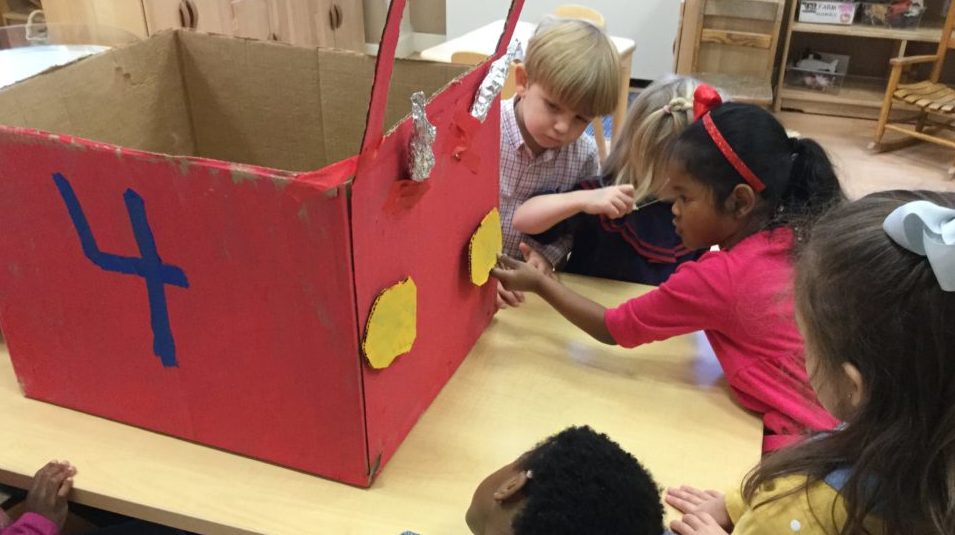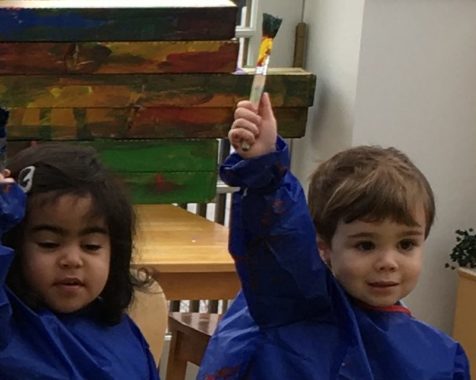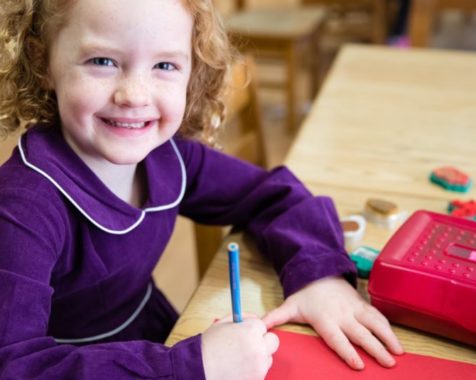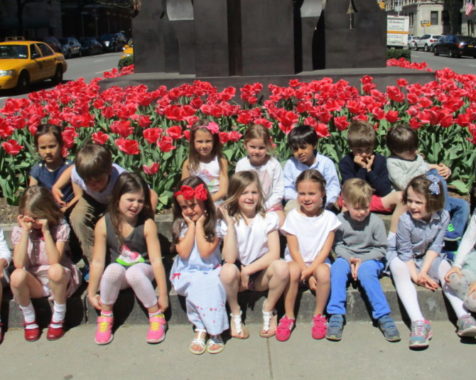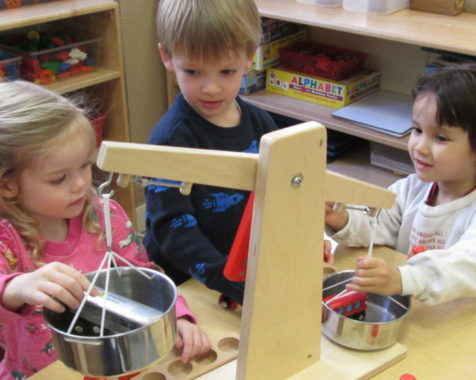Project work at Brick Church allows children to practice working together to gain understanding of big ideas such as their place in a school community, for example, or how trees change through the year. Children are given plenty of time to encounter materials in different ways, formulate and test their own hypotheses, and create works that demonstrate their knowledge as well as celebrate their aesthetic sensibilities. Teachers balance nurturing the children’s love of exploration and creation with opportunities to practice skills in a meaningful way. They document discoveries and often facilitate the children sharing their learning with the larger community.
The School encourages project work and offers many opportunities to attend workshops and see projects in action in a variety of schools, even sending teachers to Reggio Emilia, Italy for inspiration. Teachers at Brick have flexibility to interpret the project approach in a way that suits their strengths and style. In some classes, ideas come mostly from the children. A large box appears in the dramatic play center, and the boys’ and girls’ eyes light up as they bubble over with suggestions to make it into a rocket, or a pizza shop, or a barn. Other teachers select projects that they have found to be successful and exciting year after year, and build up resources to make those studies rich and memorable. Not having to “reinvent the wheel” can give these teachers more time to dedicate to other tasks such as documentation. Some teachers observe the interests of children, which vary from year to year, and present projects to build on those enthusiasms. For instance, if the class is passionate about maps, teachers may offer opportunities to make models of the city or the classroom. Another year, children might learn about their city through neighborhood drawing trips, or making props and putting on plays. The fact that teachers can interpret the project approach in a way that feels right to them individually is one of the School’s strengths.
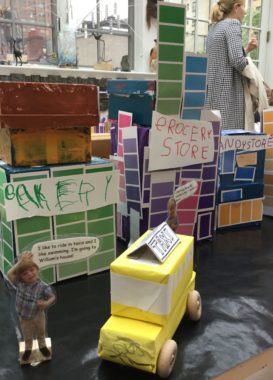
At Brick Church, projects are one of many ways children learn. There is also a place for skill work apart from, or incorporated into, the project. Wherever possible, teachers seek ways to authentically practice skills in the service of the project. It makes sense to children to write numbers and letters when measuring parts of the school building or labeling their block building apartments. The teacher documents progress, for instance photographing evidence of a child’s cutting or taking notes on which children are comfortable using “writing” to communicate. This documentation guides the teacher in deciding how to best support skill growth.
Much project work is communal, with children building on each other’s ideas, creating a shared mural, or helping each other carry heavy supplies. Teachers do not always give directions or answers. The respect children feel when adults listen seriously to their proposals empowers them to be active learners rather than expecting to passively receive. This will serve them well wherever they may go after leaving Brick. When children stand back and admire something they have created together, they feel a part of something powerful, and recognize that they can do together what they could not do alone. Projects often connect children to the real world, when they go to the neighborhood store to ask questions and buy materials, for example. A trip to the museum carrying clipboards with pictures of things to find feels different from a family trip to the same museum, for the child is there not as a tourist but as an artist or scientist, not so fundamentally different from the artists and scientists whose work is on display. The children may realize that they could go back to their classroom and create a museum of their own!
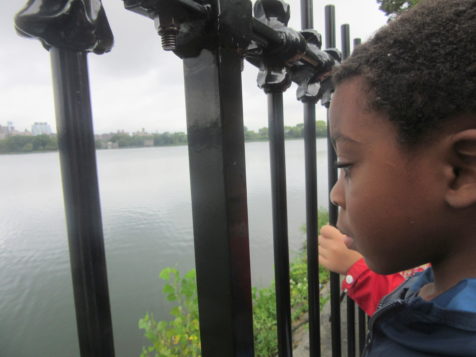
Project work gives children a way to experience many of the positive values that Brick Church stands for. Through careful observation of real world materials children gain appreciation of the beauty of nature, or the effort that has gone into invention. The desire to communicate their ideas or to recreate art or architecture they have studied motivates them to improve art skills and verbal complexity, taking responsibility for their own learning. Children work as part of a community, helping each other, and find pleasure in pulling their own weight while discovering that everyone brings different strengths to the project. The teacher’s thoughtful presentation of children’s work and project materials nurtures the children’s delight in order and beauty. A study of the School and Church’s physical environment naturally elicits questions that deepen understanding of spiritual ideas. Through project work children grow in respect for materials, differing ideas, themselves, and each other. Teachers who closely observe children’s approaches and accomplishments have the opportunity to learn from the children, and become more effective educators.
